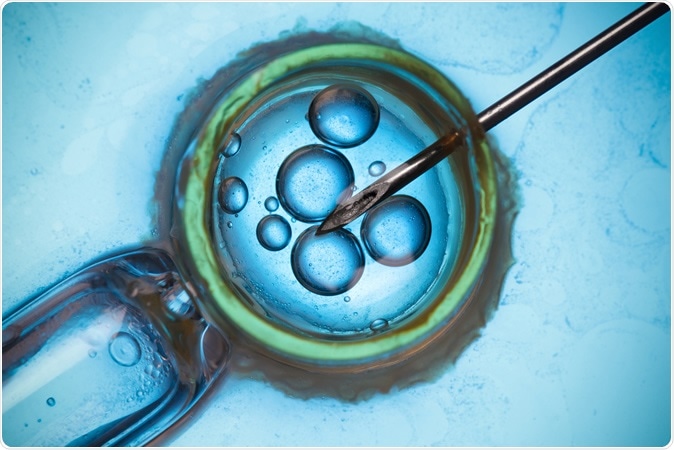Research has shown that women who undergo multiple cycles of IVF (In Vitro Fertilization) are more likely to have a baby. The study published in the Medical Journal of Australia reports the cumulative live birth rates after complete ovarian stimulation cycles. The study looked at chances of having a baby successfully after several rounds of IVF or other types of assisted reproduction techniques.

Image Credit: Nevodka / Shutterstock
For this study the researchers looked at 56,652 women who had already undergone eight cycles of treatment in Australia and New Zealand during 2009-2012. They were tracked until 2014 or until they gave birth to a live baby. Results showed that for women over the age of 40, the success rates for having a live baby rose from 10% at the first cycle of IVF to around 40% at the end of the seventh cycle.
According to researcher Michael Chapman this study shows that women who are undergoing IVF do have a “reasonable” chance of getting pregnant. He explained that the rates of success are higher for younger women. At present women who are trying assisted reproduction are counseled about the low chances of success before they start on the treatment. This study can change what is being told the women. Chapman explains that until now there was no data on the success rates of multiple cycles vis a vis single or a couple of cycles of IVF. This is the first long term data that researchers have he added. But he warned that IVF can never guarantee a 100% chance of a success. He said that it is the hardest to say to a patient to stop trying with multiple cycles after a point of time.
Overall live birth rate was 32.7% after the first cycle and 54.3% at the end of eighth cycle according to conservative estimates. The rates are 77.2% after eighth cycle as per optimal estimates write researchers. In women who started before 30 years the rates of success after first cycle was 43.7% and rose to 69.2% (conservative estimates) or 92.8% (optimal estimates) at the seventh cycle. Women aged between 40 and 44 years however showed a success rate of 10.7% for the first complete cycle and 21.0% (conservative estimates) or 37.9% (optimal estimates) for the eighth cycle.
Associate Professor Georgina Chambers from the University of New South Wales Explained how the study was done and said that a single cycle was taken as one cycle of stimulation of the ovary (usually with a medication) along with fresh and frozen embryos. The probability of success with a live birth was analyzed with repeated cycles.
The study also showed that of the women who start having IVF before the age of 45 years, 23-35 per cent would stop after each completed cycle unable to cope with the physical, emotional and financial demands of the treatment. Women over 45 are most likely (nearly 50%) to stop the treatment after a single complete failed cycle. According to Chambers, the average number of completed IVF cycles is 2.1 and is different for each couple and individual.
In 2014, data shows that 33,750 women in Australia and New Zealand underwent 67,700 cycles of IVF and this led to live birth of 12,900 babies. Cost concerns are that each cycle costs up to $12,000. The IVF industry in Australia is $500 million-a-year strong and was earlier brought under scanner by the Australian Competition and Consumer Commission for making false claims regarding high success rates. After this study, concrete evidence supports claims that multiple cycles may raise the chance of success say the researchers.